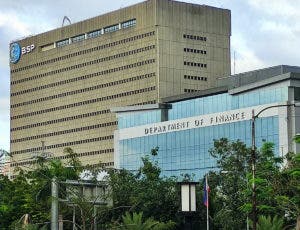Maintaining good fundamentals will allow the Philippines to immediately recover from the coronavirus disease 2019 (Covid-19) pandemic, the Department of Finance (DoF) said.
The DoF in an economic bulletin said the current account balance hit a surplus of $8.7 billion, or 92.4 percent of gross domestic product (GDP), in January to September this year, a reversal from the deficit of $3.0 billion during the same period in 2019 on the back of the lower deficit in trade in goods.

The current account is the balance of exports and imports of goods, services and income balances. This is the equivalent of the investment-saving gap, an indicator closely monitored by credit rating agencies.
According to the DoF, this indicates that the economy is back to a net lender status (as opposed to being a net borrower in the previous year) despite increased borrowing by the government.
The deficit in the trade in goods balance went down from 9.6 percent of GDP in the first three quarters of 2019 to 6.4 percent of GDP as imports slowed down due to negative economic growth.
“The current account balance reverted to a surplus from a deficit last year as the economy slowed down, bringing down import demand with it. As a result, the peso strengthened from the end-2019 level of P50.8 per $1 to P48.1 per $1 as of mid-December 2020. Likewise, the economy’s savings exceeded investments despite the rise in government borrowing,” said the DoF.
“Maintaining good fundamentals by keeping both the budget deficit and balance-of-payments (BoP) manageable, keeping interest rates at the level that sustains investments, keeping inflation at the lower end of the inflation target, and allowing the exchange rate to maintain its competitive level will allow the country to recover promptly as the lockdowns set up to battle the pandemic are eased,” it added.
The Bureau of Treasury (BoT) earlier reported that the budget deficit widened to P61.4 billion in October due to lower revenues and expenditures.
The central bank, meanwhile, reported that the overall BoP position in the first 10 months of the year amounted to $10.3 billion, supported by higher foreign borrowings by the national government, as well as lower merchandise trade deficit; and inflows from foreign direct investments (FDI) and overseas Filipino (OF) remittances, as well as trade in services.
Inflation, meanwhile, picked up to 3.3 percent in November on the back of higher prices of food and non-alcoholic drinks.
This is, however, still within the government’s 2.0- to 4.0-percent inflation target.
The government in mid-March imposed quarantine measures to prevent the spread of Covid-19.
As a result, the country’s gross domestic product (GDP) slid by 0.7 percent in the first quarter, a record 16.9 percent in the second — when Metro Manila and other parts of the country were under enhanced community quarantine — and 11.5 percent in the third.
Due to the prolonged Covid-19 pandemic-related lockdowns in the country, the country’s GDP is projected to contract by 8.5 to 9.5 percent this year.
Economic managers expected better economic outcomes next year as the economy gradually moves toward full reopening. With this, the economy is seen to grow by 6.5 to 7.5 percent in 2021 and 8 to 10 percent in 2022.

